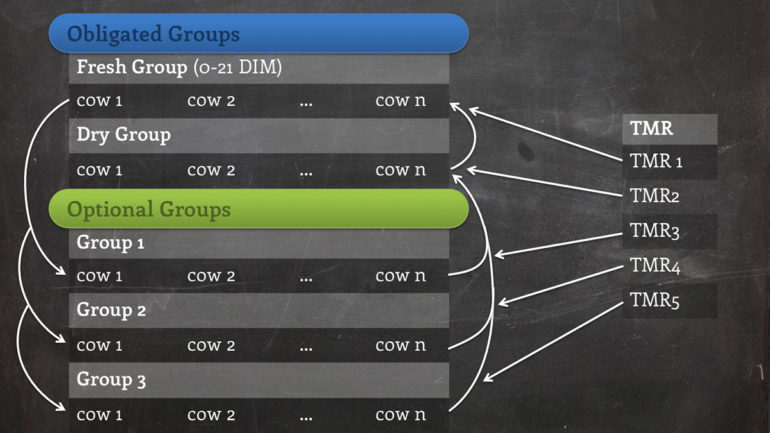
Financial Advantages of Grouping & Feeding Dairy Cows by Nutritional Need – Dr. Victor Cabrera
May 18, 2018
In this presentation, Dr. Victor Cabrera, from University of Wisconsin- Madison, evaluates the economic impact of nutritional grouping in dairy cows by using a stochastic Monte Carlo simulation model. The model uses data from 5 commercial dairy herds to explore the effect of herd size, structure, and characteristics on the economics and efficiency of nutritional grouping strategy.
What you will learn:
- Benefits of nutritional grouping in feed costs, efficiency, and herd health
- How to group according to nutritional requirements
- Differing results from 1 TMR to 4 TMR
Grouping and Feeding Cows by Nutritional Need
Article by: Colleen Larson, University of Florida Regional Dairy Extension Agent
When dairy cows are grouped by production level, dairy farmers and nutritionist can formulate a ration that meets their nutritional needs. At the 29th Annual Ruminant Nutrition Symposium, Dr. Victor Cabrera, University of Wisconsin-Madison, spoke about the financial advantages of grouping cows by nutritional need.
Some of the benefits to grouping cows are; saving feed costs, improving productivity, improving herd health, and decreasing nutrient emissions to the environment. However, grouping cows by nutritional need increases the need for management by requiring additional group changes and mixing different rations.
Income over feed cost (IOFC) was the measure used to determine the effectiveness of nutritional grouping strategies. There was a clear economic advantage when nutritional grouping was employed. The gain from moving from 1 group to 2 groups was $39/cow/year, for 3 groups it was $46/cow/year, and for 4 groups it was $47/cow/year.
Grouping cows by nutritional needs also resulted in a better herd BCS (body condition score) distribution. Dairy cows that gain too much body condition in late lactation are more prone to complications in the next lactation. When all cows were fed one TMR, there were more cows with body conditions <2 and >4. When cows were fed three different TMR diets, there were more cows in the the 2.5 – 3.5 range.
Dr. Cabrera also noted that financial gains were more significant in herds over 1000 cows when up to 4 different TMRs were fed. For dairies with less than 1000 cows, the financial gains of nutritional grouping peaked at three different TMRs. Additionally, an increase in efficiency of use of N (nitrogen) was noticed. This leads to decreased nutrient emissions to the environment.
Dr. Victor Cabrera
Associate Professor and Extension Specialist, Department of Dairy Sciences
University of Wisconsin- Madison
Tags: Dr. Victor Cabrera
© 2024 Virtus Nutrition, LLC








Leave a Comment